- Mechanical and Electrical Responses in Living Matter
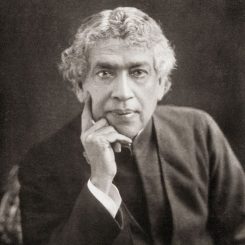 The first two chapters of Bose's 'Response in the Living and Non-living'.
The first two chapters of Bose's 'Response in the Living and Non-living'.
Reaction under stimulus is seen even in the lowest organisms; in some of the amœboid rhizopods, for instance. These lumpy protoplasmic bodies, usually elongated while creeping, if mechanically jarred, contract into a spherical form.If, instead of mechanical disturbance, we apply salt solution, they again contract, in the same way as before. Similar effects are produced by sudden illumination, or by rise of temperature, or by electric shock.
A living substance may thus be put into an excitatory state by either mechanical, chemical, thermal, electrical, or light stimulus. Not only does the point stimulated show the effect of stimulus, but that effect may sometimes be conducted even to a considerable distance.
- Wheat grows and corn ripens, though all the banks in the world may break…
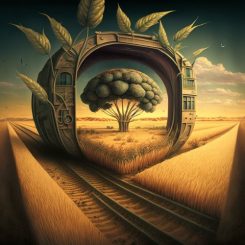
The first two chapters of 'Ten Acres is Enough', by Edmund Morris.
The man who feeds his cattle on a thousand hills may possibly see the title of this little volume paraded through the newspapers; but the chances are that he will never think it worthwhile to look into the volume itself. The owner of a hundred acres will scarcely step out of his way to purchase or to borrow it, while the lord of every smaller farm will be sure it is not intended for him.Few persons belonging to these various classes have been educated to believe that ten acres are enough. Born to greater ambition, they have aimed higher and grasped at more, sometimes wisely, sometimes not. Many of these are now owning or cultivating more land than their heads or purses enable them to manage properly. Had their ambition been moderate and their ideas more practical, their labor would be better rewarded, and this book, without doubt, would have found more readers.
- Bechamp’s preface to ‘The Blood and its Third Element’
 Bechamp's preface to 'The Blood and its Third Element'.
Bechamp's preface to 'The Blood and its Third Element'.
This work upon the blood is the crown to a collection of works upon ferments and fermentation, spontaneous generation, albuminoid substances, organization, physiology and general pathology which I have pursued without relaxation since 1854, at the same time with other researches of pure chemistry more or less directly related to them, and, it must be added, in the midst of a thousand difficulties raised up by relentless opponents from all sides, especially whence I least expected them.To solve some very delicate problems I had to create new methods of research and of physiological, chemical and anatomical analysis. Ever since 1857 these researches have been directed by a precise design to a determined end: the enunciation of a new doctrine regarding organization and life.
It led to the microzymian theory of the living organization, which has led to the discovery of the true nature of blood by that of its third anatomical element, and, at last, to a rational, natural explanation of the phenomenon called its spontaneous coagulation.
- The Magnifying Transmitter

By Nikola Tesla. "If my memory serves me right, it was in November, 1890, that I performed a laboratory experiment which was one of the most extraordinary and spectacular ever recorded in the annals of science. In investigating the behavior of high frequency currents, I had satisfied myself that an electric field of sufficient intensity could be produced in a room and used to light up electrodeless vacuum tubes..." - The Problem of Increasing Human Energy
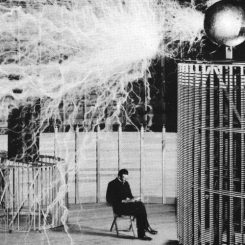 The introduction to Tesla's book 'The Problem of Increasing Human Energy'.
The introduction to Tesla's book 'The Problem of Increasing Human Energy'.
"Of all the endless variety of phenomena which nature presents to our senses, there is none that fills our minds with greater wonder than that inconceivably complex movement which we designate as human life.Its mysterious origin is veiled in the forever impenetrable mist of the past, its character is rendered incomprehensible by its infinite intricacy, and its destination is hidden in the unfathomable depths of the future.
From where does it come? What is it? Where is it going? These are the great questions which the sages of all times have endeavored to answer."
- Some Statistics
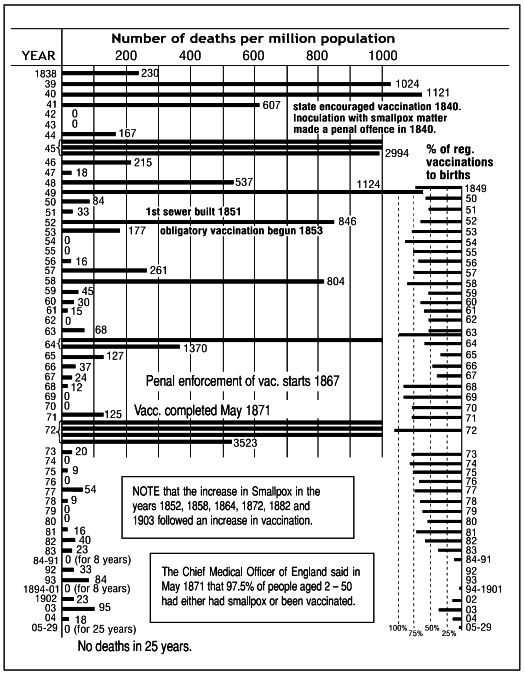 R. Pearson
R. Pearson
Extract from the book 'Bechamp or Pasteur?'
In any discussion of the value of a remedy or preventative for any disease, actual statistics of the results that have followed the use of such remedy or preventative in the past should be of great value in judging it, especially when the trend over a long period of years can be charted graphically.Hence it seems proper to consider what a chart showing the death rates both before and after the introduction of some of these biological treatments, might indicate; especially when the results can be compared with the general trend following other methods of treatment of more or less similar diseases.
For this reason, this chapter contains several charts showing the death rates of several diseases both before and after the use of biologicals, as well as some of the death-rates of similar diseases with and without the use of biologicals.
- The Cult of the Microbe and the Origin of ‘Preventive Medicine’
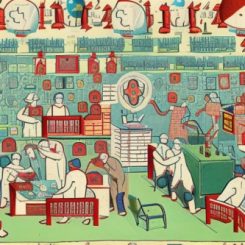 From the book 'Bechamp or Pasteur?'
From the book 'Bechamp or Pasteur?'
Ethel Hume describes the origin of the cult of the germ theory of disease. It was at the beginning of 1873 that Pasteur was elected by a majority of one vote to a place among the Free Associates of the Academy of Medicine. His ambition had indeed spurred him to open ‘a new era in medical physiology and pathology’, but it would seem to have been unfortunate for the world that instead of putting forward the fuller teaching of Béchamp, he fell back upon the cruder ideas now widely known as the ‘germ theory’ of disease.It was at the beginning of 1873 that Pasteur was elected by a majority of one vote to a place among the Free Associates of the Academy of Medicine. His ambition had indeed spurred him to open ‘a new era in medical physiology and pathology’, but it would seem to have been unfortunate for the world that instead of putting forward the fuller teaching of Béchamp he fell back upon the cruder ideas now widely known as the ‘germ theory’ of disease.
- My Early Life

An extract from Tesla's 'My Inventions'.
"The progressive development of man is vitally dependent on invention. It is the most important product of his creative brain. Its ultimate purpose is the complete mastery of mind over the material world, the harnessing of the forces of nature to human needs. This is the difficult task of the inventor, who is often misunderstood and unrewarded..."
Copyright © A Distant Mirror
